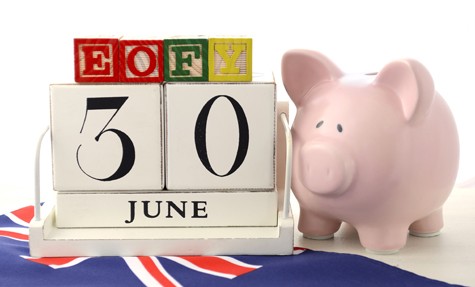Your 30 June investment tax guide

The weeks leading up to the end of each financial year are an opportune time to assess your investments from a tax perspective.
Although you may not be planning to prepare and lodge your 2021-22 tax return for a little while, in accordance with Australian Tax Office lodgement deadlines, it's important to understand what your tax position is before 30 June.
On an investment level, that means having a clear picture of your potential tax liabilities from investments and any opportunities you have to minimise those liabilities where appropriate.
1. Identify all your investments
It may sound obvious, but knowing exactly what you're invested in is the first step towards understanding your end-of-year tax position.
That's fairly easy if your all investments are in one place, but many of us have investments spread across different investing platforms.
So, it's also easy to lose track of some investments and miss tax liability issues that could potentially be averted if acted upon prior to 30 June.
Spend some time, over the next week if possible, to do a full audit of your investment holdings including shares, bonds, property and cash, so you're fully across your portfolio.
It may be prudent to consult your accountant, and your financial adviser if you use one, to determine if any portfolio adjustments before 30 June are appropriate.
2. Calculate your income payments
All income earned from investments during the financial year is taxable.
If your investments are held in your own name, then any income earned is added to your personal income, including your salary, and taxed at your marginal tax rate.
Investment income includes any distributions paid from managed funds and exchange traded funds (ETFs), share dividends, bond income distributions, interest income from cash, and rental income from investment properties.
You'll need to provide a detailed record of the distributions paid from each investment you owned in 2021-22 in your next tax return.
3. Calculate your tax liabilities
In addition to income tax liabilities (the tax payable on your investment income), you may also be liable for capital gains tax (CGT) from sales of investments during the financial year.
CGT is payable on any profits you've made on your investments over time at your individual marginal tax rate.
Net profits are calculated after taking into account your total acquisition cost, including any costs associated with buying, holding, and selling your investment. These costs will reduce your overall capital gain.
If you've owned an investment for at least 12 months you're entitled to discount your CGT rate by 50 per cent. Investments held for less than 12 months are assessable at your marginal tax rate.
For complying super funds, the CGT discount is 33.33 per cent. Companies can't use the CGT discount.
4. Realise investment losses
Another way of reducing CGT is to consider selling investments before 30 June that have made a loss since you purchased them.
These losses, including losses carried over from previous tax years, can be used to offset profits on sold investments in order to reduce your CGT liability.
As well as reducing CGT liabilities, the sale of loss-making investments can also free up money to invest elsewhere.
But you may want to seek external professional financial or tax advice before taking any action in this regard.
Consider that investments currently recorded in your portfolio as loss-making may become profitable in the future.
You should also be mindful of the ATO's focus on "wash sales", where investors sell assets to generate a tax-deductible loss and then repurchase the same or a similar assets shortly thereafter.
The ATO may cancel any tax benefits received if it determines transactions have primarily been undertaken to offset profits and avoid the payment of CGT.
5. Keep track of allowable deductions
Investment profits also can be offset by allowable tax deductions.
Among other things, you can claim a deduction for expenses you incur in earning interest, dividend, or other investment income.
You may be able to claim a deduction if you attend seminars in relation to existing investments.
You can claim a deduction for interest charged on borrowed money to buy shares or other investment assets.
You can also claim deductions on investment account-keeping fees and investment management fees or retainers.
Furthermore, you may be able to deduct a portion of other investment costs you incur including expenses linked to how you monitor your investments.
Examples include depreciation in the value of your home computer, other devices, and the cost of internet access.
Deductions are also allowed by the ATO for some travel expenses and the cost of specialist investment journals and subscriptions.
Summary
With limited time left before the end of the financial year it makes sense to get yourself into good investment tax shape before 30 June.
That really means ensuring that you're across all your investments, are aware of income you earned during the year, your potential tax liabilities, and allowable deductions.
If you're unsure of what pre-30 June investment steps make the most sense for you, consider contacting a tax specialist and/or financial adviser.
Tony Kaye
31 May, 2022
vanguard.com.au
